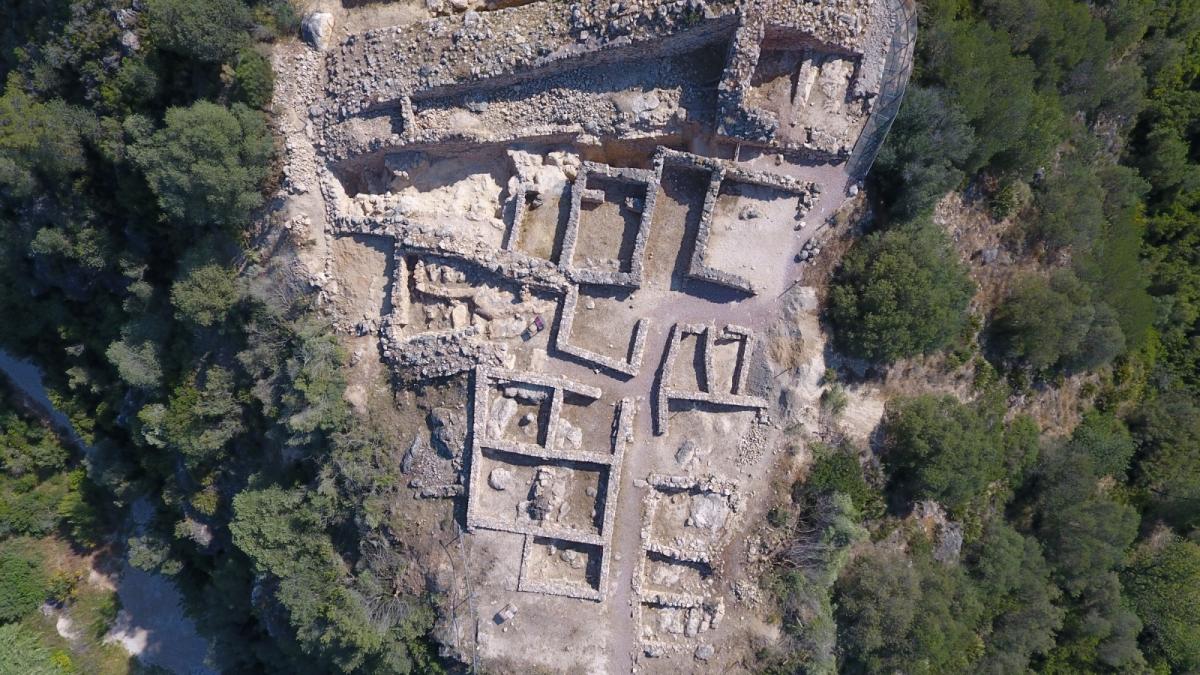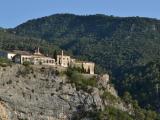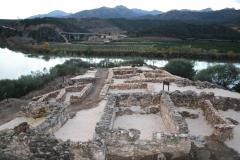Iberian settlement of Castellot de la Roca Roja
Since 2021, the Castellot de la Roca Roja (Iberian village) has been declared as a Cultural Property of Local Interest by the Baix Ebre Regional Council.
VISITS
The guided visits to the Castellot de la Roca Roja take place from Monday to Friday and are linked to navigability, as you arrive with the Llagut Benifallet. This guided tour is NOT carried out in the months of January, February, July, August, November and December. The visit to the Castellot can also be done freely; for these, it is not necessary to make a prior reservation. Visits are only offered for groups of a minimum of 20 people. It is necessary to arrange them in advance by calling 977 462 334 or sending a message to covesmeravelles@benifallet.cat
The visit begins at the Benifallet pier, where visitors must take the Llagut Benifallet which will take them to the Castellot pier, where there will be a guided tour. The Castellot de la Roca Roja is one of the best preserved Iberian towns in Catalonia. The Iberian settlement is located on a rocky hill on the left bank of the Ebro, approximately 40 meters above the river level and about 50 meters above sea level.


In 1998 a team from the University of Barcelona, under the direction of Joan Sanmartí, Jaume Noguera and Maria Carme Belarte, proposed to start an archaeological research project on the Castellot de la Roca Roja that included the complete excavation of the site with a view to musealizing it.
The first step before starting this project was the study and publication of the materials recovered in 1974, by Jaume Noguera. The Classical, Protohistorical and Egyptian Archaeology Research Group conducted five excavation and consolidation campaigns between 1998 and 2002.
The chronology of the occupation of the Castellot is contemplated between the sixth and third century BC, precisely in a period still little known in the lower stretch of the river Ebro. It was in the late 5th century B.C. when the town was built as we can see today. The whole stands out for its good state of conservation, which allows us to imagine quite accurately how life could have been in this inhabited town for about 300 years, between the 6th and 3rd century BC.
Nowadays you can still see defensive constructions up to 5 meters high and a simple urban plot, with perpendicular streets from where you access the houses, usually rectangular. The Red Rock settlement is not an isolated case, as a whole network of settlements of similar characteristics has been identified in the lower Ebro. All these settlements show the characteristics described for the Castellot: they occupy the extremities of the river terraces or of small hills near the Ebro, with a very small area and a tight urbanism that accommodated very small populations of less than one hundred people.







